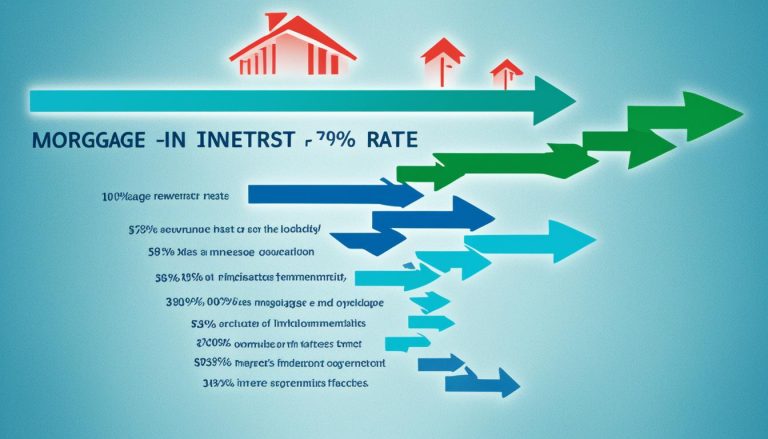Looking to get more out of your mortgage? If you’ve heard the term “offset mortgage” floating around but aren’t quite sure what it means, you’re in the right place. In this guide, we’ll delve into the world of offset mortgages, exploring what they are, how they work, and whether they might be the right choice for you. Whether you’re a first-time buyer or a seasoned homeowner, understanding the ins and outs of offset mortgages could help you make smarter financial decisions. Let’s dive in.
What is an Offset Mortgage?
An offset mortgage is a smart way to save money on your loan while still having access to your savings. Unlike traditional mortgages, an offset mortgage is linked to a savings account. The money you save in this account is used to reduce the balance on which interest is calculated. This can result in significant interest savings over the term of your loan.
With an offset mortgage, you make monthly repayments to reduce the outstanding balance, similar to a capital repayment mortgage. However, the savings in your account are only used to offset the remaining balance for interest purposes. You still need to pay off the loan in full. This makes it different from an interest-only mortgage where you only pay the interest and still owe the full amount at the end of the term.
How Does an Offset Mortgage Work?
An offset mortgage is a unique type of mortgage that allows you to link your current and savings accounts to your loan. By doing so, the total balances in these accounts are offset against the amount you owe on the mortgage each month. This arrangement enables you to reduce the outstanding balance on which interest is calculated, potentially saving you money in the long run.
Here’s a simplified breakdown of how an offset mortgage works:
- Linking Accounts: When you choose an offset mortgage, you’ll need to connect your current account and savings account to your mortgage. This process is typically facilitated by your mortgage provider.
- Balance Offset: The total balance in your linked accounts is then offset against the outstanding balance of your mortgage each month. For example, if you have a mortgage of £200,000 and £50,000 in your linked accounts, you’ll only be charged interest on the remaining £150,000.
- Interest Calculation: Your mortgage interest is then calculated based on the reduced balance. This can lead to significant savings over the life of your loan compared to a traditional mortgage where interest is calculated on the full loan amount.
While your savings won’t earn interest while linked to the mortgage, the benefit lies in the potential to lower your monthly payments or shorten your mortgage term. By reducing the outstanding balance, an offset mortgage can help you pay off your loan sooner or reduce the amount you need to pay each month.
To determine if an offset mortgage is the right choice for you, it’s essential to consider various factors such as mortgage rates, the amount of savings you have, and your financial goals. Consulting a mortgage advisor can provide you with expert guidance tailored to your specific circumstances. Additionally, using a mortgage calculator and comparing different mortgage options can give you a clearer picture of the potential savings and costs associated with an offset mortgage.
Using an Offset Mortgage Calculator
An offset mortgage calculator is a useful tool for understanding how an offset mortgage could work in your specific situation. It allows you to input your mortgage details, including the loan amount, interest rate, and repayment term. The calculator then provides you with an estimate of the potential savings you could achieve by offsetting your savings against the mortgage balance.
By using an offset mortgage calculator, you can:
- See the impact of offsetting your savings on your monthly payments and overall interest paid
- Compare the potential savings of an offset mortgage to other mortgage options
- Understand how different interest rates can affect your savings
Ultimately, an offset mortgage calculator helps you make an informed decision by providing valuable insights into the financial benefits of choosing an offset mortgage.
| Mortgage Calculator Comparison | Offset Mortgage Calculator |
|---|---|
| Calculates payments based on the full loan amount | Calculates payments based on the reduced mortgage balance after offsetting savings |
| Doesn’t consider the impact of savings on interest paid | Highlights potential interest savings by offsetting savings against the mortgage |
| Provides estimates based on standard repayment terms | Offers insights into how adjusting savings and mortgage balance can affect repayment terms |
Using both a mortgage calculator and an offset mortgage calculator can give you a comprehensive understanding of your options and help you make an informed decision about whether an offset mortgage is the right choice for your financial needs.

The Benefits of an Offset Mortgage
Choosing an offset mortgage offers several benefits that can help you save money and achieve your financial goals. By offsetting your savings against your mortgage balance, you have the opportunity to minimize the interest you pay, potentially resulting in significant savings over the term of your loan.
One key advantage of an offset mortgage is the ability to pay off your mortgage sooner. By utilizing your savings to offset the balance, you can reduce the total amount of interest that accrues, allowing you to become mortgage-free faster.
Another benefit is the flexibility an offset mortgage provides. When purchasing a property, having an offset mortgage may enable you to put down a smaller deposit. This can be particularly advantageous if you want to keep your savings accessible for other purposes, such as home renovations or investments.
Furthermore, the savings in your linked account won’t be considered for taxation purposes. Unlike traditional savings accounts that earn interest and are subject to taxes, the savings in an offset account do not generate interest and are therefore not taxable.
It’s important to note that offset mortgage rates may be slightly higher compared to traditional mortgages. However, the potential savings from the reduced interest can outweigh the higher rates, especially for individuals with significant savings.
Offset Mortgage Options
When considering an offset mortgage, you have several options to choose from:
- Offset vs. Traditional Mortgage: Comparing an offset mortgage to a traditional mortgage can help you understand the potential benefits and drawbacks of each.
- Offset Tracker Mortgage: This type of offset mortgage is linked to a variable rate, meaning your interest rate can fluctuate with the market.
- Offset Fixed Rate Mortgage: With an offset fixed rate mortgage, you lock in a specific interest rate for a predetermined period, providing stability and predictable payments.
- Offset Mortgage Rates: Understanding the current offset mortgage rates can help you evaluate the cost-effectiveness of this mortgage option.
By considering these different offset mortgage options, you can choose the one that aligns with your financial needs and goals.

Is an Offset Mortgage Right for You?
Deciding whether an offset mortgage is right for you depends on your individual circumstances. It can be a suitable option if you have significant savings that you don’t need to access for a number of years. It can also be beneficial for family members who want to help children or other family members get on the property ladder without tying up their cash in the property. People who want flexibility to access cash, higher rate taxpayers looking to avoid higher tax rates on savings interest, and those seeking to minimize their monthly payments or shorten their mortgage term may also find an offset mortgage advantageous. However, you should carefully consider the potential savings and weigh them against the higher rates and fees that may come with offset mortgages. It’s advisable to do the calculations or consult a mortgage advisor to determine the best option for your specific circumstances.
The Advantages of an Offset Mortgage
- Opportunity to reduce monthly mortgage payments or shorten the mortgage term
- Flexibility to access cash savings when needed
- Potential for significant savings over the long term
- Option for family members to support others without sacrificing access to their own savings
Things to Consider
While an offset mortgage offers numerous benefits, there are a few factors to keep in mind:
- Offset mortgage rates and fees may be higher compared to traditional mortgages
- Offset mortgages may not be available with all lenders
- It’s important to assess the potential savings against the higher costs
- Consulting a mortgage advisor or using an offset mortgage calculator can help with decision-making
By weighing the advantages against the considerations and evaluating your financial goals, you can make an informed decision about whether an offset mortgage is the right choice for you.
Example: Offset Mortgage Savings Comparison
| Mortgage Type | Interest Rate | Loan Amount | Monthly Payment | Total Interest Paid |
|---|---|---|---|---|
| Offset Mortgage | 2.5% | £250,000 | £1,000 | £150,000 |
| Traditional Mortgage | 3% | £250,000 | £1,100 | £180,000 |
In this example, choosing an offset mortgage with a lower interest rate results in monthly savings of £100 and total interest savings of £30,000 over the term of the loan. It’s important to compare specific offers and consider your own financial situation when deciding between an offset mortgage and a traditional mortgage.

Conclusion
Offset mortgages offer a smart solution for homeowners looking to minimize their mortgage interest payments. By linking your savings account to your mortgage, you can offset the balance and potentially save money over the duration of the loan. However, it’s important to weigh the benefits against the trade-offs. Offset mortgages may have higher interest rates and fees compared to traditional mortgages, and the availability of offset mortgage deals may be limited.
Before making a decision, it’s recommended to use a mortgage comparison tool to evaluate different options and calculate potential savings. Additionally, consulting a mortgage advisor can provide valuable insights and ensure you make an informed choice based on your specific financial goals and circumstances. Taking the time to understand the options and seek professional advice will help you choose the most suitable offset mortgage for your needs.
Overall, offset mortgages can be an effective way to reduce mortgage costs, particularly for those with significant savings. By considering the benefits, trade-offs, and seeking expert guidance, you can determine whether an offset mortgage is the right choice for you. Whether you’re a first-time buyer or remortgaging, exploring the pros and cons of offset mortgages is a vital step towards finding the most advantageous solution for your financial situation.
FAQ
What are the benefits of an offset mortgage?
An offset mortgage can minimize the interest you pay, potentially save you money over the loan term, allow you to pay off your mortgage sooner, and offer flexibility to access cash.
Is an offset mortgage right for me?
Whether an offset mortgage is suitable for you depends on factors such as your savings, how much flexibility you want, and the potential savings compared to other mortgage options.
How can I compare offset mortgages and seek professional advice?
You can use a mortgage comparison tool, consult a mortgage advisor, and calculate the potential savings and costs associated with offset mortgages to make an informed decision.






